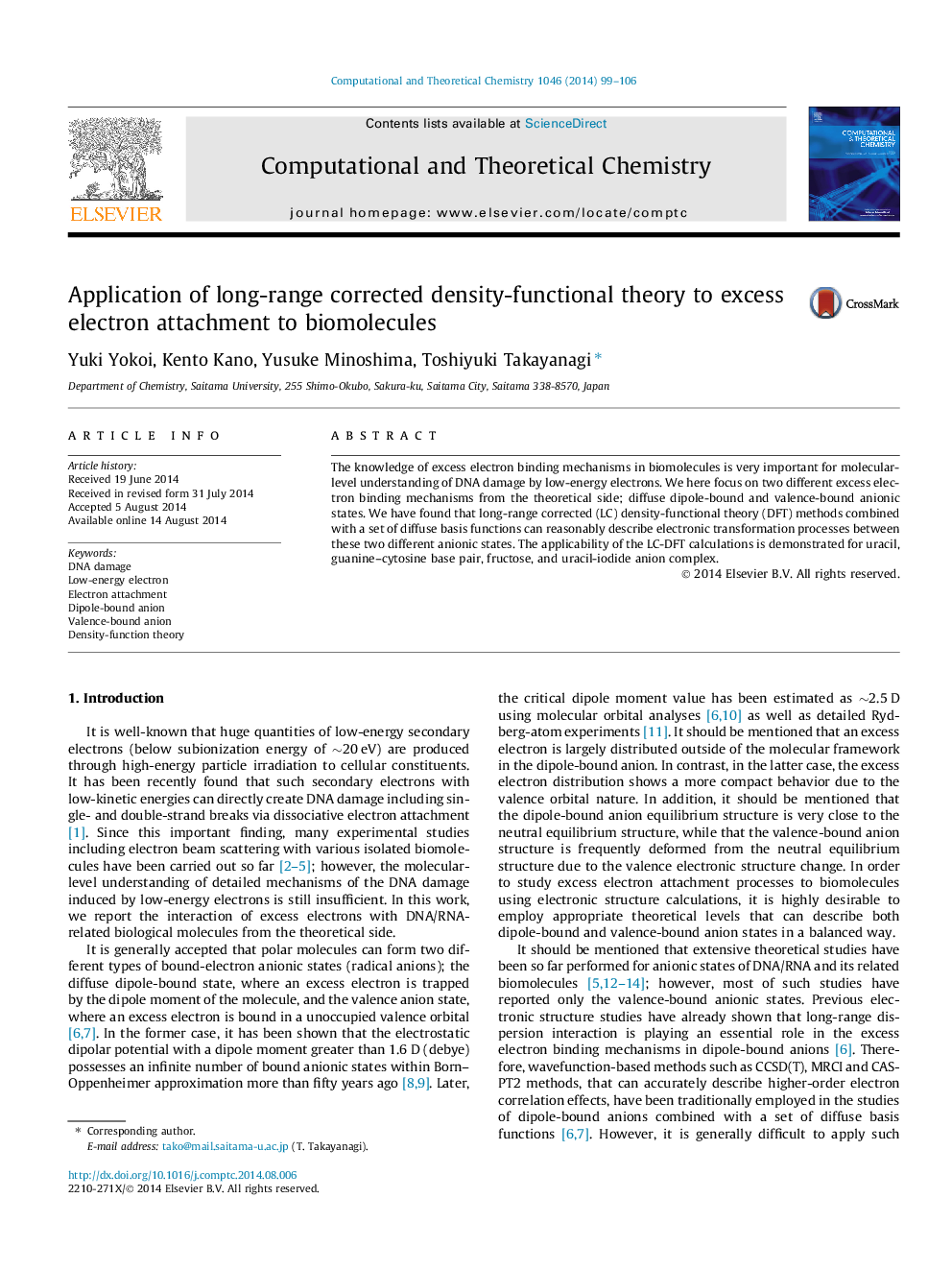| کد مقاله | کد نشریه | سال انتشار | مقاله انگلیسی | نسخه تمام متن |
|---|---|---|---|---|
| 5393594 | 1505580 | 2014 | 8 صفحه PDF | دانلود رایگان |
- Excess electron attachment to biomolecules is studied with LC-DFT methods.
- LC-DFT methods can reasonably describe both dipole-bound and valence-bound anion states.
- Transformation between dipole-bound and valence-bound anionic states is studied.
The knowledge of excess electron binding mechanisms in biomolecules is very important for molecular-level understanding of DNA damage by low-energy electrons. We here focus on two different excess electron binding mechanisms from the theoretical side; diffuse dipole-bound and valence-bound anionic states. We have found that long-range corrected (LC) density-functional theory (DFT) methods combined with a set of diffuse basis functions can reasonably describe electronic transformation processes between these two different anionic states. The applicability of the LC-DFT calculations is demonstrated for uracil, guanine-cytosine base pair, fructose, and uracil-iodide anion complex.
Journal: Computational and Theoretical Chemistry - Volume 1046, 15 October 2014, Pages 99-106
